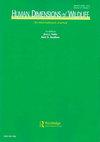利用通信网络评估加拿大安大略省野生动物专业人员之间野生动物健康数据和信息的共享水平
IF 1.7
4区 环境科学与生态学
Q2 BIODIVERSITY CONSERVATION
引用次数: 0
摘要
野生动物专业人员需要共同努力,更有效地保护野生动物的健康;然而,不同职业和机构的人之间的合作可能具有挑战性。我们的目标是检查和比较加拿大安大略省的保护和动物健康领域如何共享野生动物健康数据和信息。110名受邀参与者中的55人(50%)在过去12个月中完成了一份关于其野生动物健康传播网络的在线调查问卷。比较了从业人员的专业沟通网络(即自我网络)在机构和专业之间的数据共享。结果显示低水平的关系分散和高水平的自我改变相似性。不同制度的人之间的数据和信息共享比不同职业的人之间的数据和信息共享更多。这项研究强调了改善安大略省野生动物保护和卫生从业人员之间网络的机会。本文章由计算机程序翻译,如有差异,请以英文原文为准。
Using communication networks to assess the level of sharing of wildlife health data and information among wildlife professionals in Ontario, Canada
ABSTRACT There is a need for wildlife professionals to work together to more effectively protect wildlife health; however, collaboration between people of different professions and institutions can be challenging. Our objective was to examine and compare how the conservation and animal health fields share wildlife health data and information in Ontario, Canada. Fifty-five (50%) of 110 invited participants completed an online questionnaire about their wildlife health communication network over the previous 12 months. The professional communication networks (i.e., ego-networks) of practitioners were compared with respect to data sharing between institutions and professions. Results showed low levels of tie dispersion and high levels of ego-alter similarity. There was more data and information sharing occurring between people of different institutions than between people of different professions based on comparing tie dispersion and ego-alter similarity values for these categories. This study highlights opportunities for improved networking between wildlife conservation and health practitioners in Ontario.
求助全文
通过发布文献求助,成功后即可免费获取论文全文。
去求助
来源期刊

Human Dimensions of Wildlife
Environmental Science-Nature and Landscape Conservation
CiteScore
4.40
自引率
12.50%
发文量
33
期刊介绍:
Human Dimensions of Wildlife is devoted to the study of social considerations in fisheries and wildlife management.
 求助内容:
求助内容: 应助结果提醒方式:
应助结果提醒方式:


